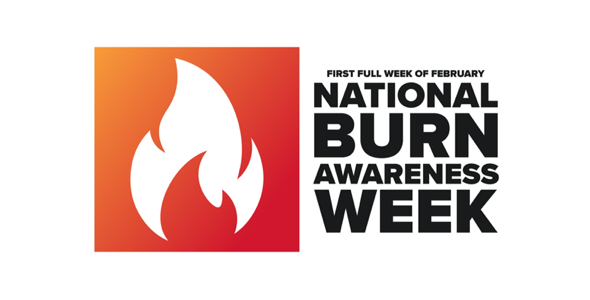By the bioMérieux Connection Editors
The first full week in February is Burn Awareness Week. This week is an opportunity for everyone, particularly burn, fire, and life safety educators, to unite by spreading awareness and prevention messages. The American Burn Association’s 2021 theme is Electrical Safety from Amps to Zap (A to Z)! Throughout the week of February 7-13, 2021, they are spreading awareness about electrical injury and burn prevention. In support of the week, burn prevention resources have been created by both the American Burn Association and U.S. Fire Administration.
Worldwide, burn injuries are a frequent source of mortality. In the US, up to 75% of the 40,000 people each year who are referred to the emergency department for burn injuries are admitted to a specialized burn unit. Studies have shown that in addition to the skin, inflammation can occur in the liver, lungs, and intestines from burn injuries. Serious burn injuries require special care as they can lead to widespread infection and are often associated with sepsis—the body’s life-threatening response to a severe infection.
The rise of antimicrobial resistance (AMR) in recent years has also led to a prevalence of difficult-to-treat pathogens in burn centers. We’ve made large strides in treating burn injuries over the last 50 years, but today the challenge is combating post-burn infections.
A study published in 2020 worked to understand how changes in the post-burn microbiome might be useful to interpret the origin and then the development of infections. The authors analyzed the genetic material of all the microbes—bacteria, fungi, and viruses—that live in a particular area of the body and how that relates to complications from burn injuries. Burn damage can cause a dysregulated immune system, with the most significant impact coming from the loss of the skin’s natural protective barrier. Additionally, once patients are in care centers, the risk of infection can be increased by the use of certain tools and methods, including urinary catheters, endotracheal intubation, and central venous access.
Specifically, the study discusses how, “theoretically, the gut may become an entrance for pathogenetic strains, leading to burn-related sepsis, which is often due to colonizing MDR bacteria.” Gut bacteria biodiversity in severe burn patients is a topic of interest and authors mention that supportive care such as probiotic supplements, high fluid resuscitation, and prompt enteral (through the intestine) nutrition can benefit the gut homeostasis in these patients.
How the microbiome in other parts of the body, such as the lungs, is affected from a burn injury still needs further research. However, the study concludes that, “knowledge of the microbiome and its functions may help individualize medicine in the preventive or curative setting,” and that, “targeting or rehabilitating the microbiome may be an efficient therapeutic strategy in the near future.”
You can observe Burn Awareness Week by learning about ways to prevent burns and sharing what you’ve learned with others. Learn more by visiting the American Burn Association’s resource page.
Opinions expressed in this article are not necessarily those of bioMérieux, Inc.



